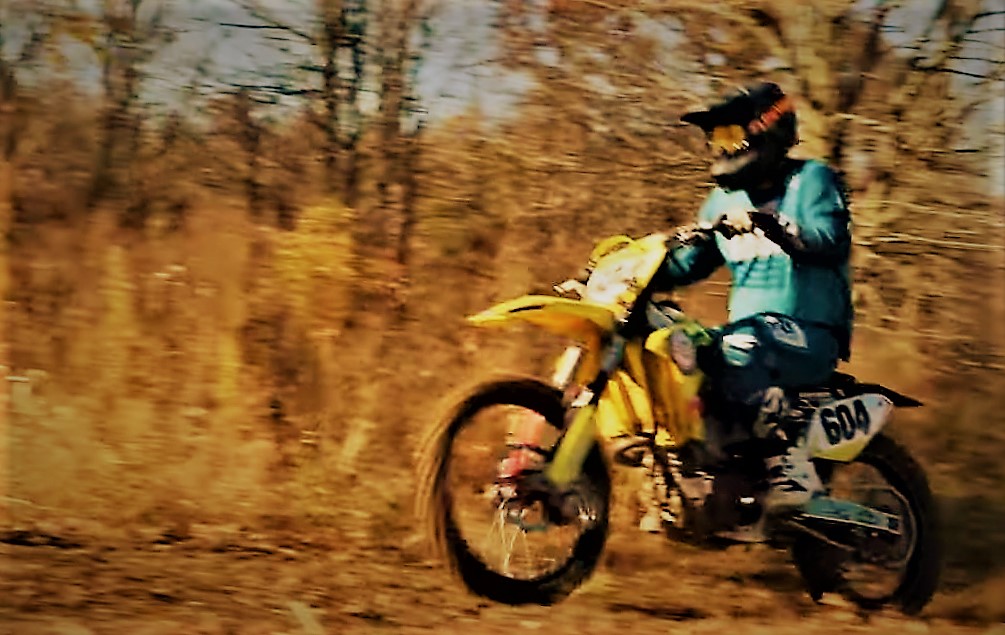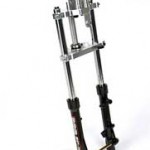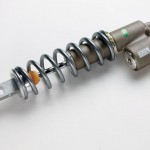Your dirt bike suspension is an oft-overlooked, or at least an under-appreciated, factor in your bike’s performance—whether you’re enjoying a weekend on the trails, performing high-flying MX tricks, or trying to squeeze every ounce of speed out of your bike at the track.
Your suspension being well cared for and tuned is as much a factor in your safety and riding success as any part of your machine.
Here are some relatively common dirt bike suspension problems, some common causes, and suggested solutions:

 Front Fork
Front Fork
Problem: Headshaking on deceleration
Solution: A few things could be happening here. Your front tire pressure is too low, or your tire sidewalls are cashed. Also, your fork springs could be too soft and might need more preload. Or your fork oil level is too low. So, make sure your tire pressure is 15 psi and inspect your sidewalls for any cracks. Preload spacers or stiffer springs could solve your problem. Try raising your fork oil level five millimeters.
Problem: Fork compression feels inconsistent
Solution: Your lower triple clamp bolts are too tight, or your fork clamps at the axle are out of alignment. Fix it by loosening and retightening your triple clamp bolts and realigning your front axle clamps.
Problem: Front end oversteering and washing out in turns
Solution: Your fork springs or LSC settings are too stiff, and it’s possible your fork tubes are not overlapping enough. Combat this by installing softer springs, turning out your compression adjuster a few clicks, and increasing your fork tube overlap five millimeters.
Problem: Front end bottoms out after jumps
Solution: Your fork oil level is too low, your fork springs are too soft, or your mid-valve compression damping is set too soft. Solve this problem by increasing your fork oil level about 10 millimeters, installing stiffer springs, and revalving HSC for more damping.
Problem: Fork shuddering when riding over bumps downhill
Solution: Your fork tubes are out of balance. You need to service your fork and inspect your spring lengths. Also, be careful when setting your axle clamp and triple clamp torque.
Problem: Excessive fork diving while braking
Solution: Low or contaminated fork oil levels and soft springs cause this. Replace your fork springs and service your fork to combat this.
Problem: Fork sag reduced after riding in hot temperatures
Solution: Your fork bushings could be worn. This allows air and pressure buildup in forks. Let your fork cool down, service it, and bleed off air pressure through your caps to reduce fork sag in high-temp conditions.
 Rear Shocks
Rear Shocks
Problem: Rear end chatters when accelerating out of turns
Solution: Your LSC is too soft, or LSR is too stiff. Try turning in your LSC adjuster about three clicks, and turning out your LSR adjuster a couple clicks.
Problem: Damping performance softens noticeably during riding
Solution: Your shock oil is likely contaminated. Service it!
Problem: Rear shock leaking oil
Solution: A few things can cause this, including worn seal packs, shaft wear and scratches, or a perforated bladder. You’ll need to rebuild your shock and make sure there isn’t excessive wear on the shaft.
Problem: Too much or too little sag
Solution: Your spring needs more or less preload, so tighten or loosen the spanner ring to adjust sag, then tighten the jam nut.
Problem: Bike pitches back into a wheelie or forward into an endo
Solution: Your spring bias is incorrect. If the bike is pitching back, check front versus rear spring sag. You’ll probably need to reduce rear sag and increase LSC. If you’re pitching forward, you’ll probably need to increase rear sag and increase your fork spring preload.



my rear shock is clicking when i compress it. would that be the shock or the swing arm? and any ideas on what it could be and how to fix it?